I am not the likeliest serial traveler to Central America. I don’t speak Spanish, or surf, or have any kind of Latin dance skills. But in recent years, I’ve been drawn to the region repeatedly, making visits to Nicaragua, Guatemala, and, this past June, to El Salvador. After the country made this year’s “52 Places to Go” list from the New York Times, I felt the familiar, early tug of intrigue that so often sends me into trip-planning mode.
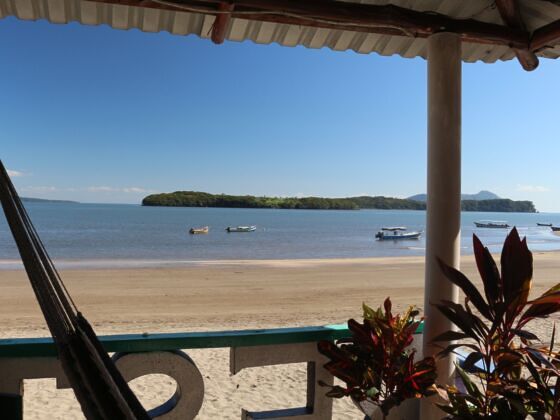

A Week Off the Tourist Trail in El Cuco, El Salvador
But the same spotlight that piqued my interest also made me wary. Did I want to go to a place where the best-known spots were becoming increasingly crowded? What else did the country offer, away from the deepening grooves of the tourist trail?
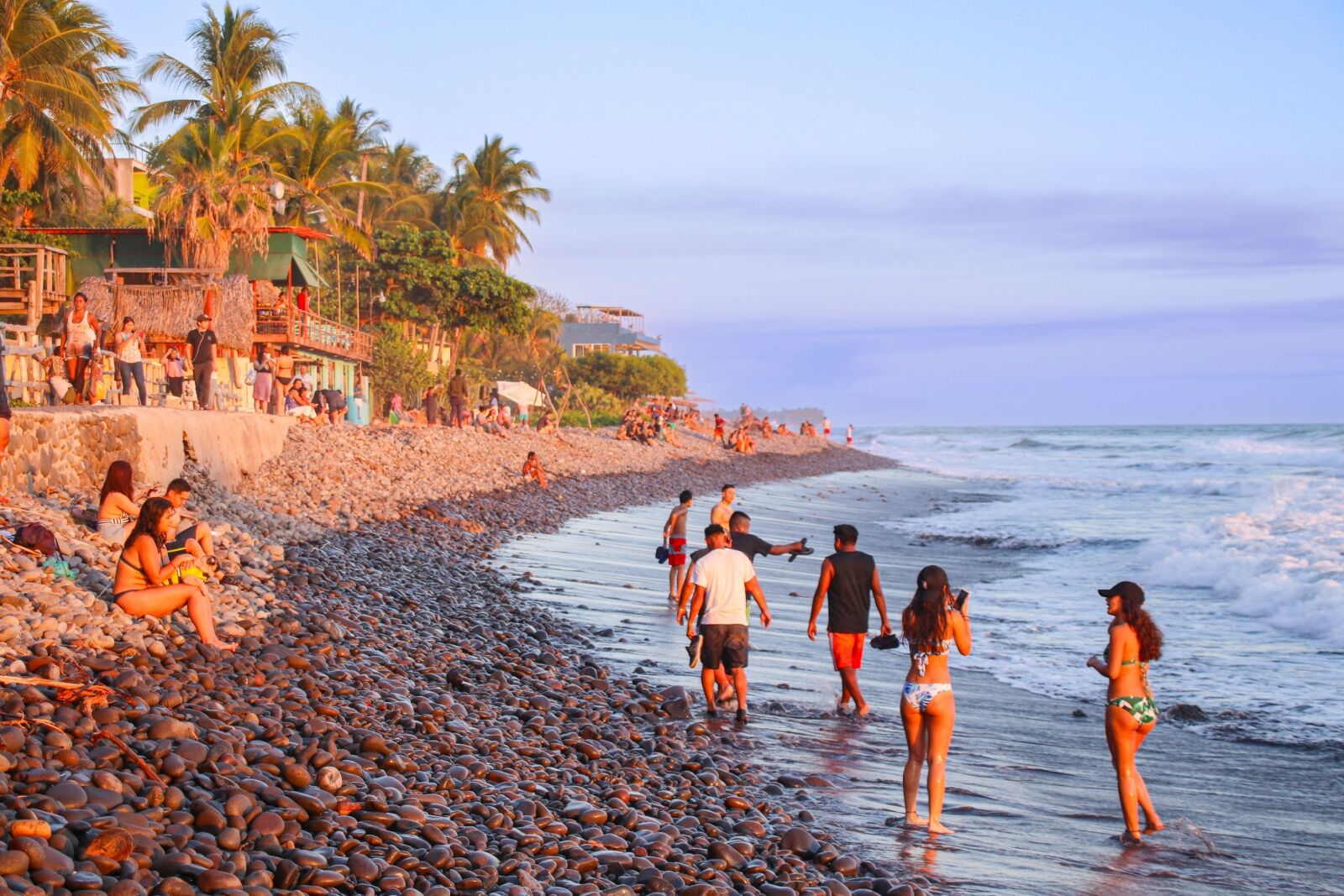
I was keen to avoid the usual tourist destinations, like those in “Surf City.” Photo: Omri Eliyahu/Shutterstock
Once famously dangerous, though now safe under strong-arm tactics from a government that some say has jailed innocent people, El Salvador’s recent tough-on-crime laws have helped make it an up-and-coming tourist destination. On my trip, I wanted to avoid the usual haunts, including Salvadoran “Surf City” (actually a region, not a city), advertised to both gringo and local wave-riders around El Tunco, El Zonte, and La Libertad. Nor did I want to drive the much-trafficked Ruta de las Flores (“Route of the Flowers,”) a flower-packed highway through colonial villages in the country’s west.
So with the goal of avoiding tourist traps, I decided on a week in El Salvador in the country’s quieter corners, as well as a nearly-deserted beach or two. I did spend some time in the capital, San Salvador, necessitated by my flight schedule. But mostly, I explored the San Miguel region, in the country’s southeast. It’s near the Gulf of Fonseca and has seen little of the tourism-driven growth experienced elsewhere in El Salvador in recent years.
A surprisingly peaceful morning in San Salvador
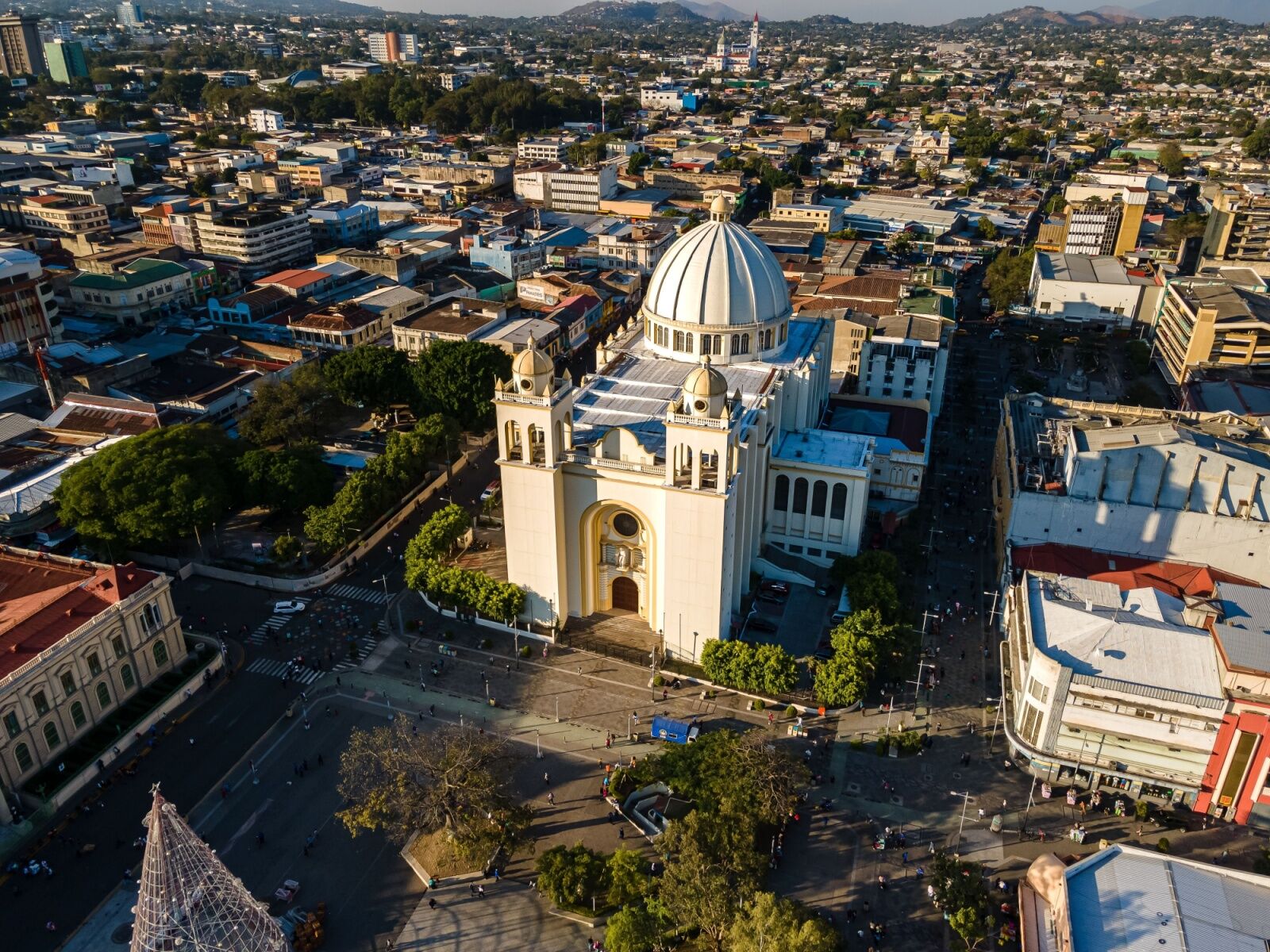
Photo: Gianfranco Vivi/Shutterstock
I slept hard and awoke the following day for a traditional breakfast of scrambled eggs, beans, tortillas, and coffee at the hotel’s on-site restaurant, with a view over Highway 2, which would later lead me to the region’s beach towns. Soon after, a 45-minute bus ride took me to San Salvador’s Centro Historico, home to the Palacio Nacional (or National Palace, now a museum), the National Library, and the Metropolitan Cathedral of San Salvador.
It was in this cathedral on March 24, 1980, that guerrillas fatally shot Cardinal Óscar Romero, who was also a prominent human rights activist, as he gave Catholic mass. Romero’s killing set in motion the country’s civil war, which ground on for a dozen years before a negotiated peace ended the bloodshed for good in 1992. Though figures vary widely, an estimated 75,000 civilians died during the conflict.
Wanting to learn more about the war and its conclusion, I headed to the Museo de la Palabra y la Imagen (the Museum of the Word and Image), for a crash course in modern Salvadoran history. Labor revolts, bloody suppression, and Cold War conflicts all made their mark in the country, as the museum showed in vivid detail.
During my late afternoon visit, the museum hosted more employees than visitors. And with signs in both Spanish and English, I found my first quiet Salvadoran place in the heart of the city.
Beach days in little-known El Cuco

Photo: Cesar Alejandro Hernandez/Shutterstock
The staff at Maria Ofelia arranged a taxi to El Cuco, the beach village I chose mostly for the tranquil-looking photos I’d found online. Pulling up to the Sambo Mambo Beach Hotel, I grinned as I took in its columned hacienda-style courtyard, and was later beckoned to the beach by a coastal palapa, or grass-roofed hut.
At check-in, I struggled to form coherent Spanish sentences before the receptionist switched to perfect California English. Angie, from Fresno, had moved there some months earlier. She worked for the owner and her lifelong friend, Jeannette.
I spent the next few days slowing down to match El Cuco’s pokey pace. Breakfasts took place in the palapa, where I washed down eggs and beans with several café con leches. The scene offered open views of the Pacific and a surf without surfers; I read books or simply watched the water.
One afternoon, I hired a jolly cab driver named Rudy, who took me to Intipucá, a nearby village in the far-southeastern department of La Unión. The town is famous for sending workers to Washington, DC. Intipucá had some unusually large homes and amenities, all built with money earned in the United States, Rudy explained.
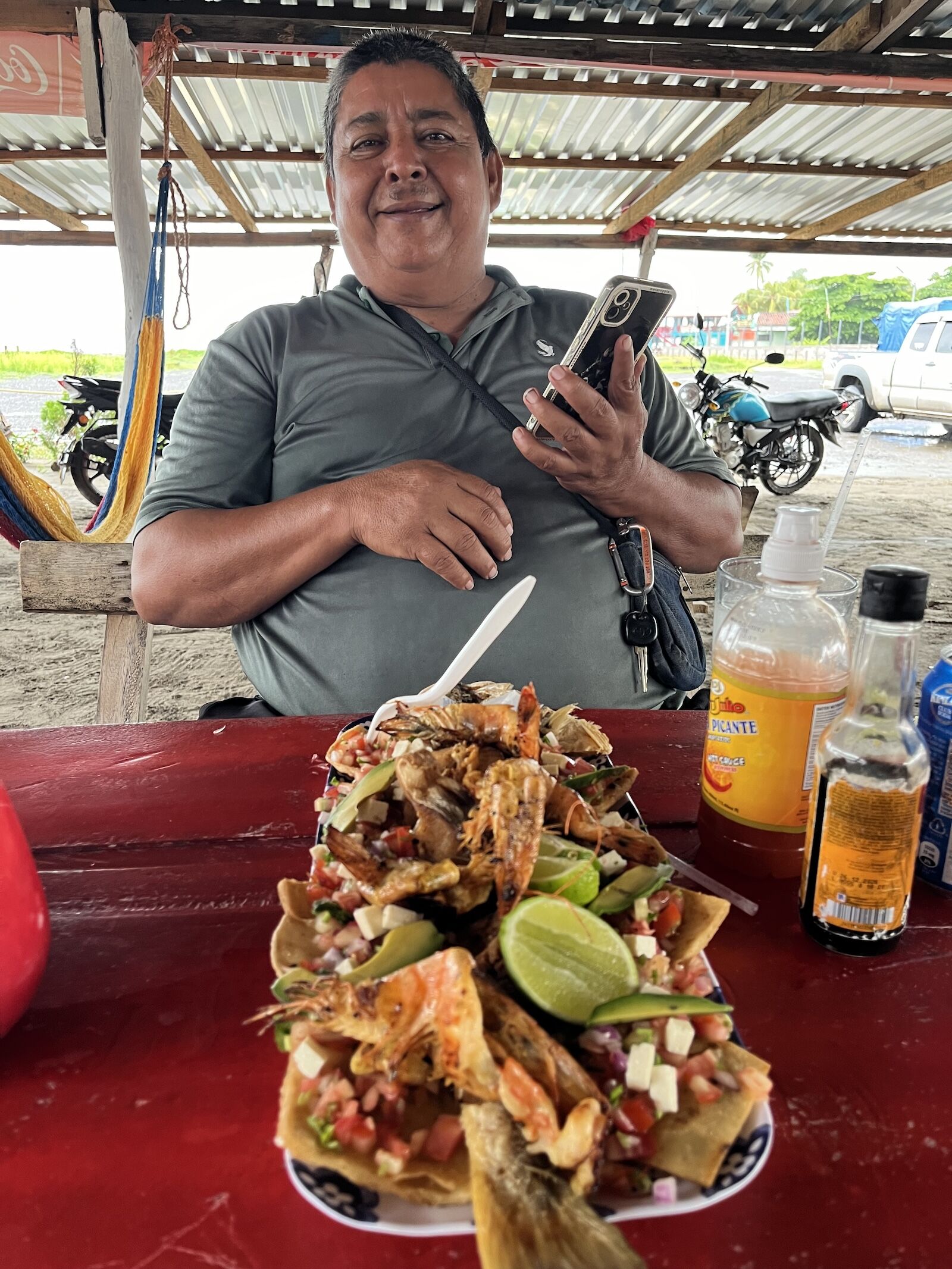
Rudy, my guide for the day. Photo: Will Fleeson
As the rain gathered that afternoon, Rudy drove partway to El Cuco before parking in a lot near a beach shack. I had wanted to see a typical hangout, I told him — a place where locals go. In a corner, kids huddled around a TV. A few friends chatted at plastic tables, greeting Rudy when they recognized him.
I watched the rain hit the water, a mesmerizing sight. Rudy and I shared beers, a seafood medley, and the music of rain on the sheet metal roof. I thanked my new friend for taking me here, and for sharing a place where he spent his free time, too.
Rainy days, and unexpected connections
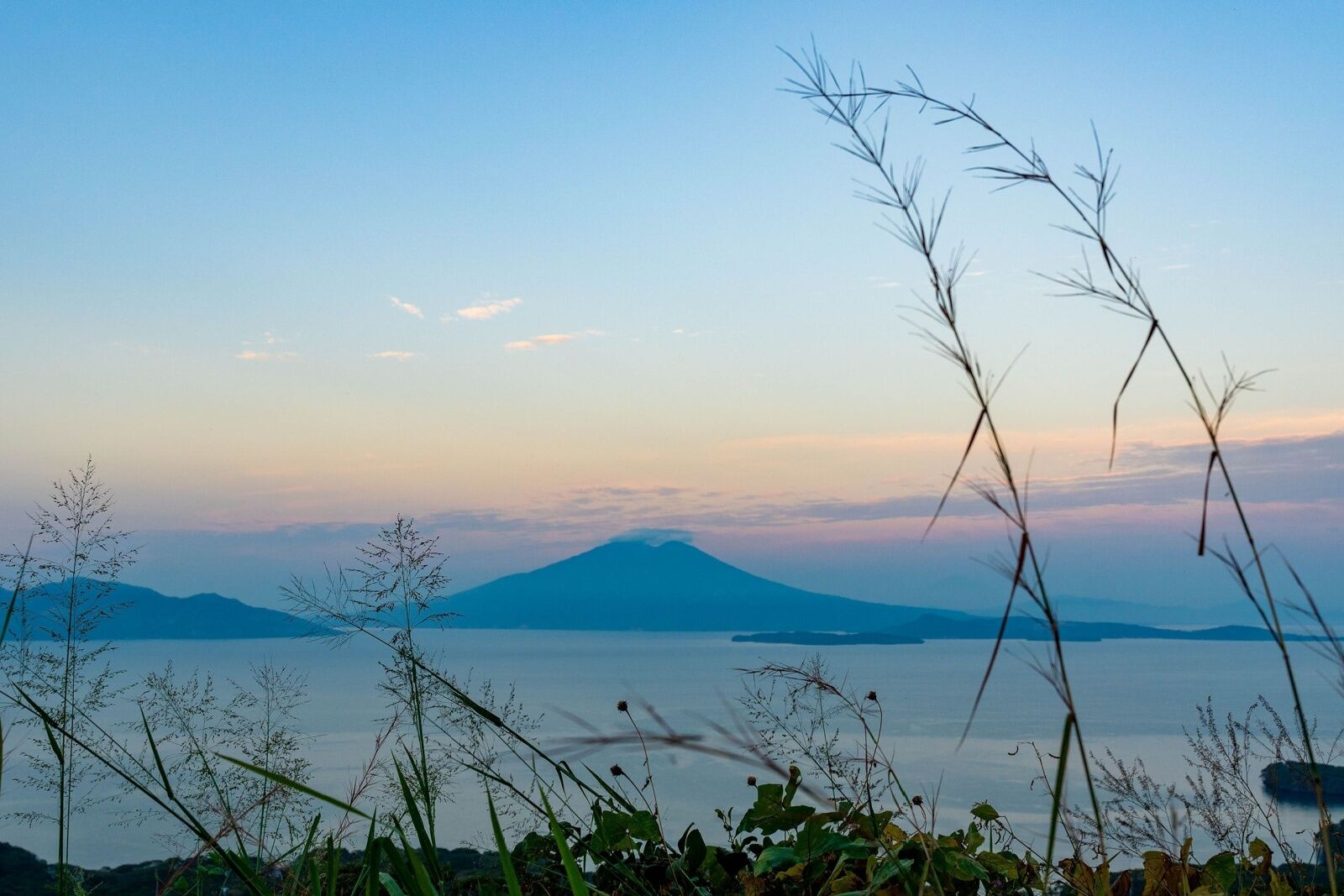
Photo: Michelle Marie Espinosa/Shutterstock
Another afternoon, a driver named William took me east to land’s end. The Gulf of Fonseca, a three-country water body bordering El Salvador, Honduras, and Nicaragua, appealed to my inner geography nerd. I wanted to see the gulf’s massive Conchagua volcano up close.
Yet instead of gulf islands and sea vistas, rain obscured everything. Parking the car, we waded through puddles with our shoes in our hands, then padded around barefoot for an hour in a low-running river bed, hoping the clouds would clear. But it continued to rain heavily, and we passed El Tamarindo beach after we gave up, where a few stray dogs and fewer people wandered the sand.
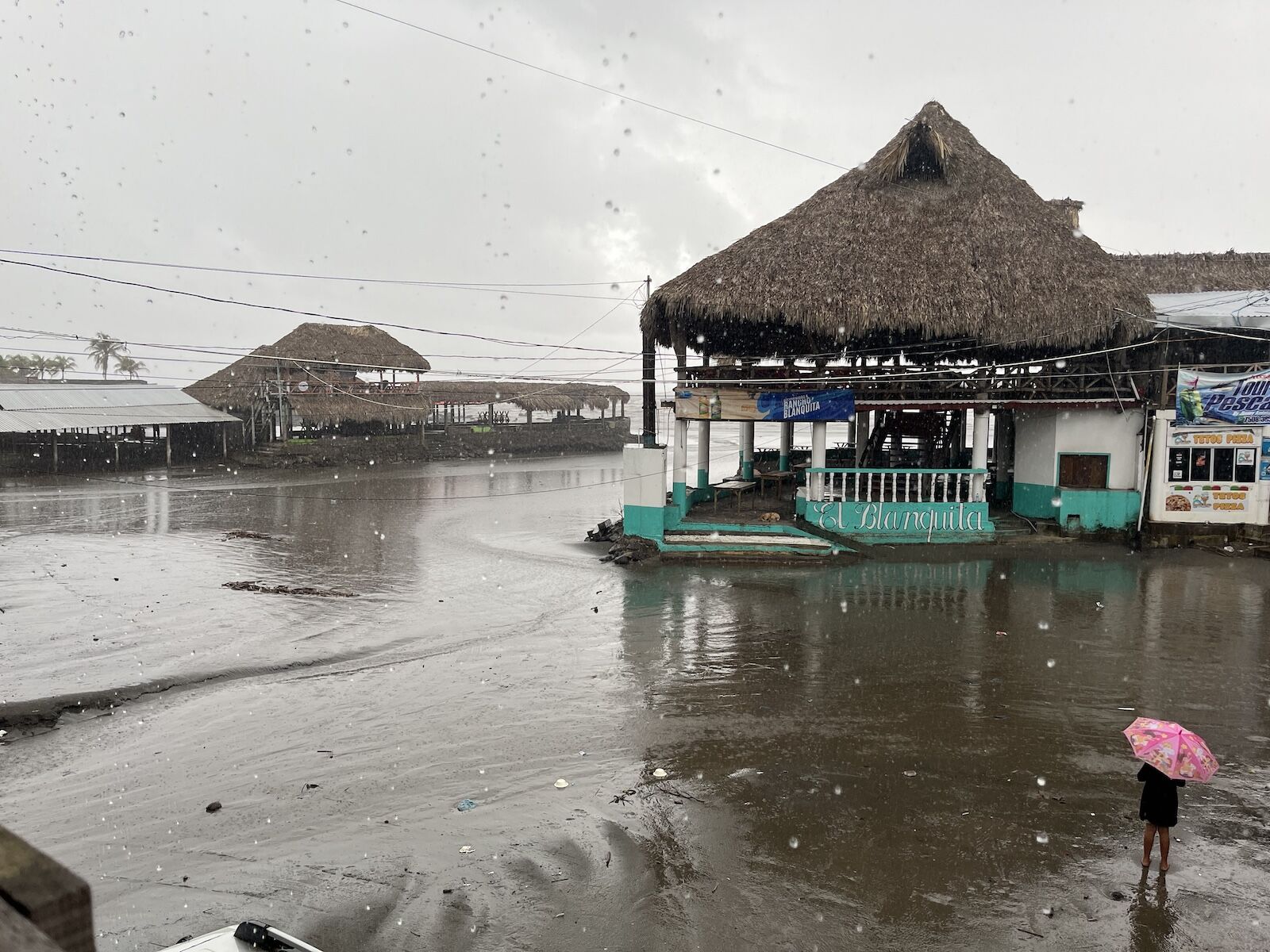
Waiting out the rain in Las Tunas, La Unión, El Salvador. Photo: Will Fleeson
Later, I asked William for the same kind of locals-only spots that Rudy knew, and we stopped at a set of open-deck beach restaurants at Las Tunas beach. Families were spending their Sunday afternoons over meals and soft drinks. Melancholy banda music wafted everywhere. I ordered Salvadoran conchas negras (a traditional black clam stew) hoping for a typical Salvadoran treat.
When the bowl came, I grabbed a big lemon wedge and squirted the inky contents with juice — and two of the clams cringed.
“Some of these are still moving!” I told William, pointing indignantly to the table as he nursed his drink. He looked surprised that I was surprised.
“Lemon juice hurts them,” William said. “So yes, claro. Of course.”
After that, I could say that at the very least, eating not-quite-dead shellfish while overlooking a nearly deserted, undeveloped beach made me think I’d succeeded in avoiding the usual tourist track.
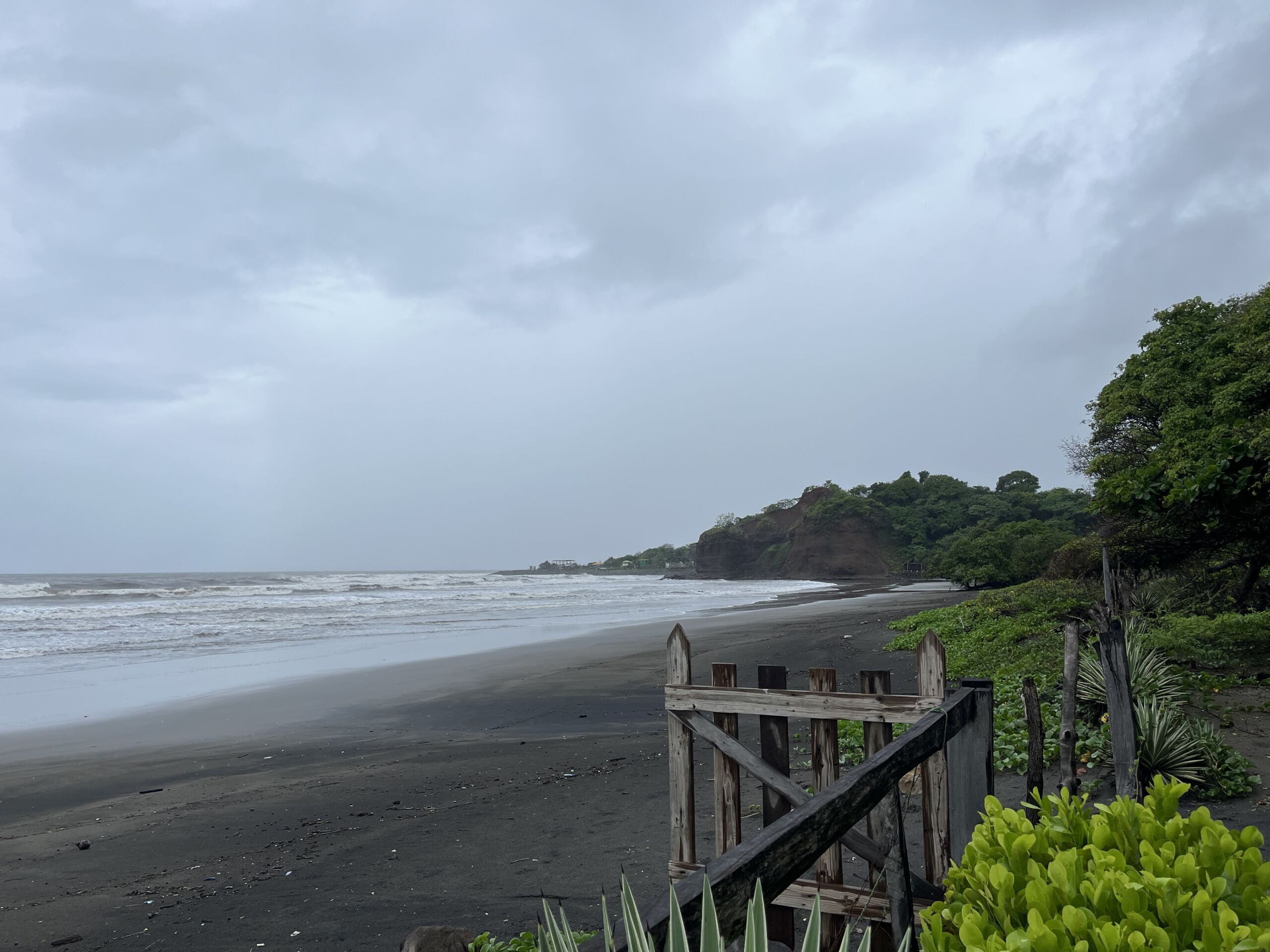
The beach view from the restaurant at Punta Mango resort. Photo: Will Fleeson
I spent my last day in El Cuco driving with Jeannette of the Sambo Mambo hotel. Born in El Salvador, she studied, worked, and lived in the United States for decades. The hotel was a new venture for her, she said, as she wanted to help the town develop by creating jobs and generating income for locals.
We sat for hours sipping tequila to the west of El Cuco at Punta Mango Surf Resort, a place Jeannette liked for its black-sand beach and coastal view. The resort sits in a gorgeous cove with arresting lime-green vegetation, where the sound of crashing waves contrasted with the silent, blissfully empty bar. Save for a small niche of adventurous surfers, the resort is solidly off most tourists’ radar. The place’s beachside bar and serenity made for a near-perfect hideaway, well removed from the Norteamericanos I sought to avoid by coming to El Salvador’s southeastern corner.
A final day in San Salvador
The trip back to San Salvador took some doing. El Cuco’s travel services remain a work in progress, and even with Sambo Mambo’s help, I struggled to find a taxi for the three-hour drive to the capital. Finally I left the memorable personalities of El Cuco behind and returned to the big city.
I stayed overnight at the Villa Serena San Benito, in the upscale San Benito neighborhood, experiencing a more luxurious side of the city. But the Museo Nacional de Antropología (National Anthropology Museum) was closed, and its celebrated restaurant, El Xolo, felt like too much of a splurge. So with time to kill, I found myself on the terrace of La Hola Beto’s, a Salvadoran-Japanese fusion restaurant.
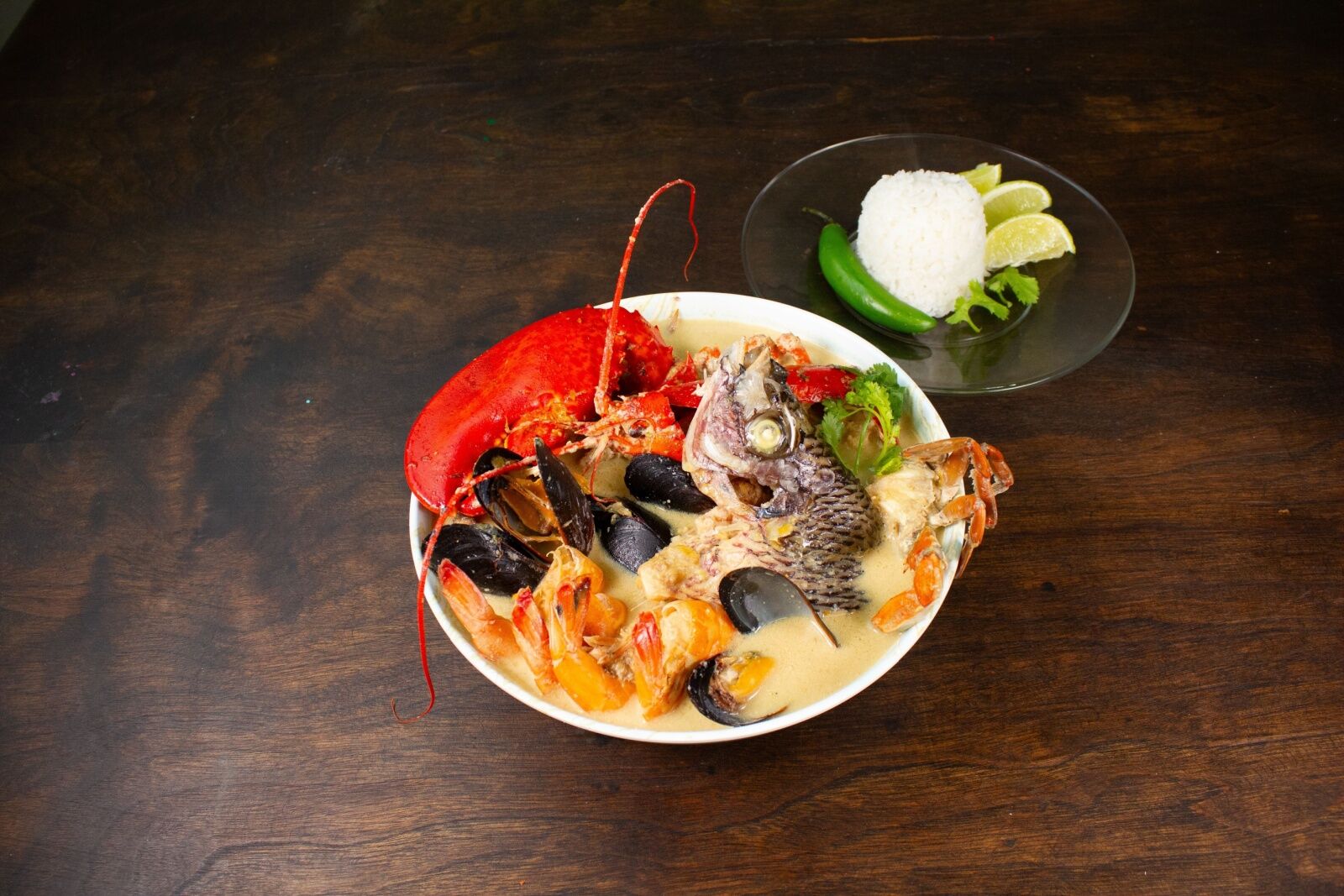
Mariscada, a seafood stew that comes in many styles and variations. Photo: Ricardo A Estevan Gamarra/Shutterstock
Over a (fully-cooked) mariscada seafood stew, I reflected on how much I’d discovered in El Salvador. The rainy weather had pushed me to connect with locals: talking with people, using my meager Spanish, and listening intently to the rich stories of those I met. Avoiding El Salvador’s ever-growing tourist trail provided not only peaceful moments outdoors, but plenty of stimulating conversation, gifting me with local encounters that felt authentic.
The next morning, a taxi from San Benito carried me to Didion’s “splendidly isolated” airport, and I headed home to DC.
Since my return, that old trip-planning urge has returned. My goal this time? Seek out even more remote parts of El Salvador, and their many little-known treasures, on my next trip to Central America.